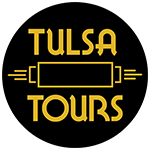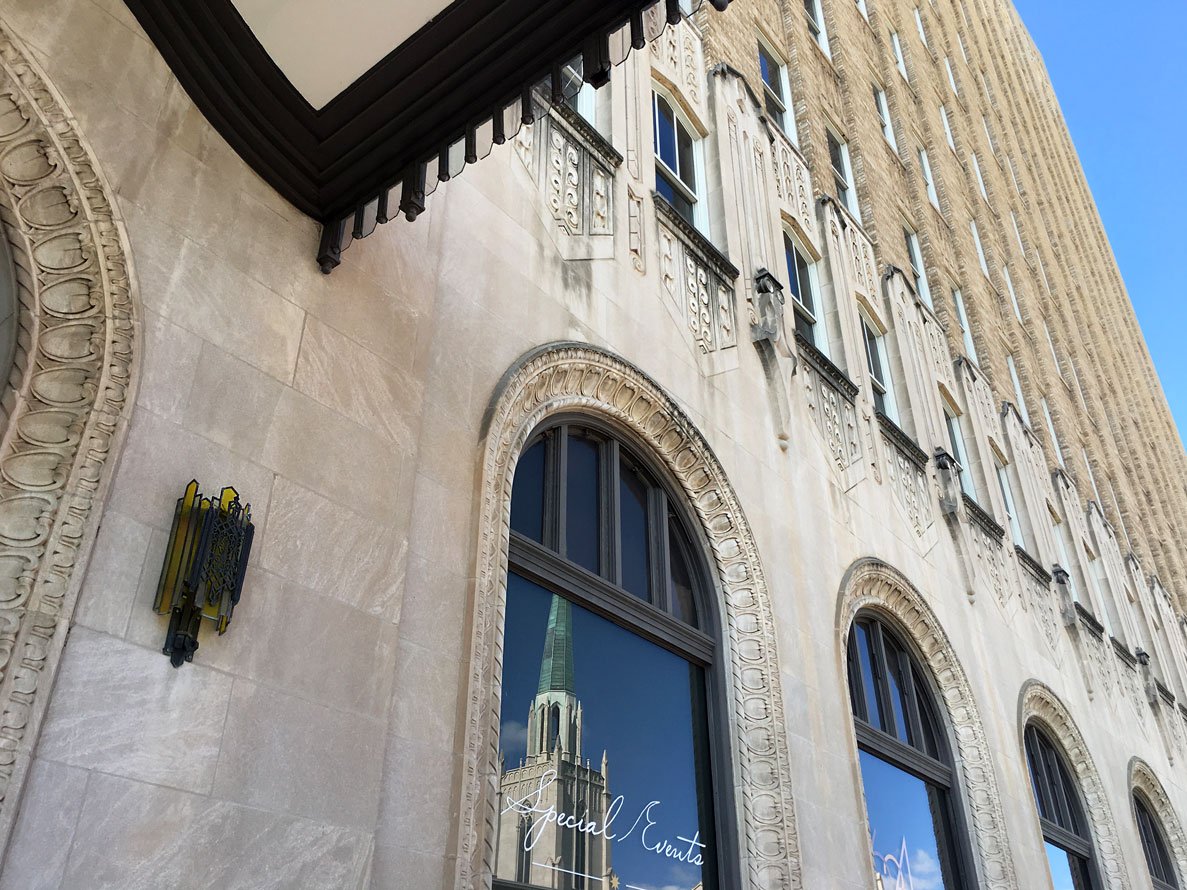Tulsa Deco District
Deco District Architecture & History
Downtown Tulsa centers around the Deco District and overlapping Oil Capital Historic District. Here you’ll find the city’s most dazzling buildings in a compact grid.
South Boston Avenue is a canyon of office towers running through the heart of the Deco District. They are totems of Tulsa’s power and wealth during the Roaring Twenties.
The Glenn Pool oil strike of 1905 spurred a construction boom of shops, hotels, and offices in downtown Tulsa. That expanding oil field sped up the push for statehood and fueled Tulsa’s rapid growth. Our free Oil Capital Pop-Up Museum covers this fascinating history.
Tulsa became the center of petroleum company headquarters, financing, land leasing, equipment leasing, oil well supplies, and trade publications. In other words, Tulsa was the Oil Capital of the World.
Deco District landmarks are from the 1910s to early 30s when the Great Depression halted new construction projects. Forty buildings within the Oil Capital Historic District are registered with the National Park Service.
Deco District landmarks include:
Exchange National Bank aka Oil Man’s Bank (now 320 South Boston)
Cosden Building (now Mid-Continent Tower)
Atlas Life Building (now Courtyard by Marriott)
Philtower
Philcade
Tulsa Club (now Tulsa Club Hotel)
Mayo Hotel
Pythian Building
PSO Building (Public Service Company of Oklahoma)
ONG Building (Oklahoma Natural Gas)
As oil money fueled construction downtown, the Zigzag style of Art Deco debuted at a Paris exposition in 1925. The design came to Tulsa two years later with the Medical and Dental Arts Building (demolished) and Tulsa Club Building (now hotel).
Art Deco buildings in/around Tulsa’s Deco District:
Philcade
Tulsa Club
Southwestern Bell Main Dial
Pythian (Gillette-Tyrrell Building)
PSO Building
ONG Building
Mayo Motor Inn
Tulsa Union Depot
Boston Avenue United Methodist Church
Warehouse Market
Day & Nite Rugs
Fire Alarm Building
Today, Deco treasures share the street with modernist office towers built in the late 40s through 70s during a second wave of development after WWII. The BOK Tower (aka One Williams Center) stands the tallest and was designed by the architect of the Twin Towers in NYC.
The Philtower, PSO, Mayo 420, and other buildings have been converted into rental apartments. The former Sinclair Oil and Gas headquarters (1919) is next in line for adaptive reuse using historic tax credits.
The Deco District is home to more rental apartments than any other neighborhood downtown. It also hosts the Tulsa Christmas Parade, a holiday tradition since 1926. The marathon’s starting line and Pride Parade pass through here too.
The best way to experience the Deco District is our Architecture & Art Deco walking tour held most Saturday mornings (except Jan-Feb). At other times, travelers and corporate groups may enjoy a private tour or the chauffeured Deco Deluxe.
While the Deco District is rich in architecture and history, it lags behind adjacent neighborhoods that offer more robust food and beverage options. Sadly, too many storefronts are vacant and some landmarked lobbies are closed to the public — true even before the pandemic.
The Oil Capital Historic District was placed on the National Register of Historic Places in 2010. It includes the area from 3rd to 7th Streets between Cincinnati and Cheyenne Avenues.











